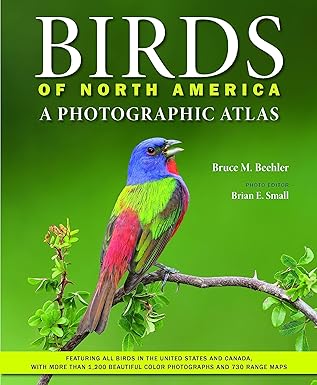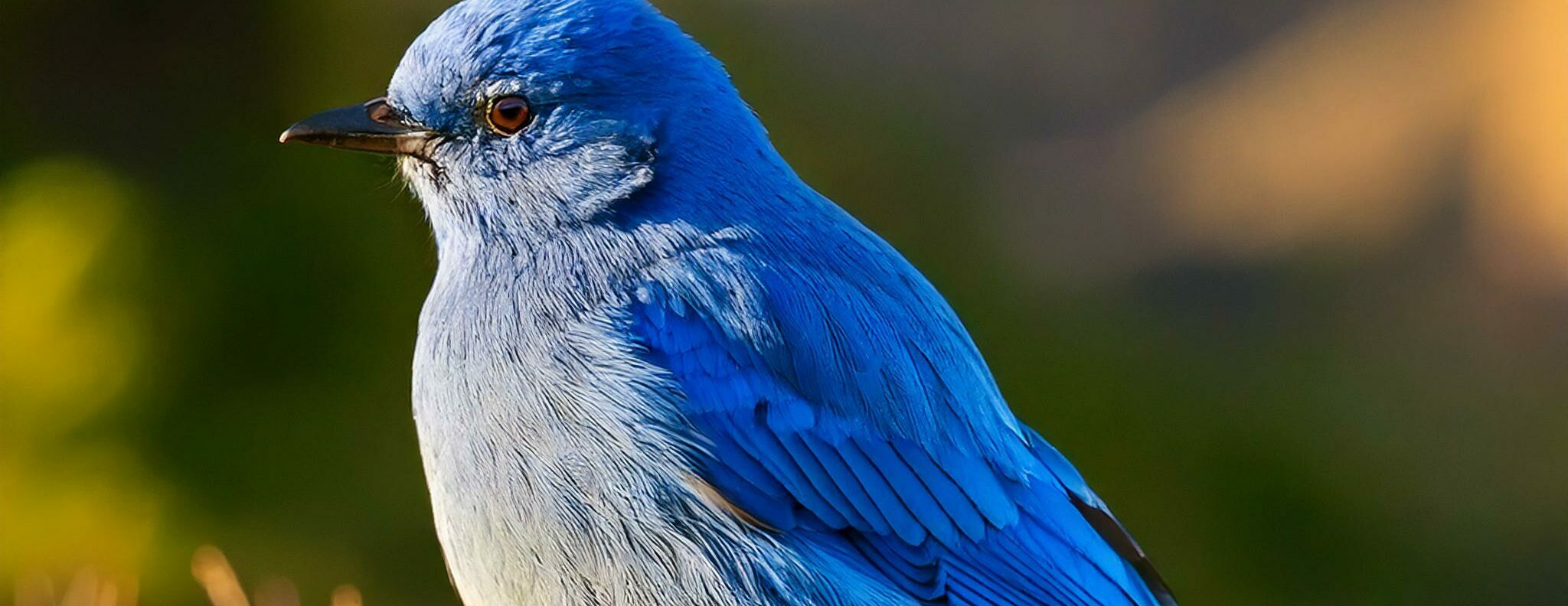The Appalachian region is like nature’s answer to a backyard paradise for the Cerulean Warbler. Stretched across a significant slice of North America, these mountains provide a stunning backdrop where these birds thrive. With their sprawling forests and varied ecosystems, the Appalachians offer the perfect hideouts and hangouts for these little blue songbirds.
What’s fascinating is how unique the Appalachian forests are. They’re not just ordinary woods. We’re talking about diverse tree species and lush canopies that give the Cerulean Warbler so many options for nesting and foraging. These forests are the definition of a vibrant ecosystem, buzzing with life, and ideal for supporting the delicate needs of our feathered friends.
If You Are A Bird Watcher, Here Is Another Book I Highly Recommend. It Is A “Photographic Atlas” Of The North American Birds. JUST CLICK ON THE IMAGE TO TAKE A LOOK:
Seasons here play a huge role in shaping the Cerulean Warbler’s lifestyle. As the snow melts away and spring breathes life into the trees, these birds start making their way up from their wintering grounds. It’s a bit of a spectacle—their migration dance, almost as if they’re in sync with the blooming flora.
Elevation adds a twist to their story too. Higher ground isn’t just good for a better view; it’s a sweet spot for these warblers to set up camp. These areas offer cooler temperatures and a mix of old and young forests, which they love. The interplay between the landscape, seasons, and elevation makes the Appalachians a special place to uncover the mysteries of the Cerulean Warbler.
The Lifecycles and Behaviors of Cerulean Warblers in the Appalachians
Cerulean Warblers are busy little travelers, with a lifecycle that’s a marvel to observe. They arrive in the Appalachian mountains for the breeding season, showing off their vibrant colors and melodious tunes. Singing their flutey songs, these birds are claiming spots and securing mates. Observing them, one can truly appreciate the intricacies of avian social norms.
Nesting is where things get really interesting. These birds prefer the tops of tall trees, which makes for some exclusive real estate. Think of it like having a penthouse, with a view of the world below. The nests are meticulously woven, displaying a blend of artistry and functionality that’s hard to miss, even from a distance.
In terms of diet, these warblers aren’t picky eaters, but they do have a flair for insects. They flit amongst branches, swiftly picking out caterpillars and other small invertebrates. Their foraging is a form of entertainment, a ballet among branches where precision matters more than speed.
Migration is not just a journey, it’s an epic saga. The Appalachian region is a vital pit stop, a part of their grand odyssey that stretches from South America to the US. Mapping their routes tells us more than just where they’re headed; it reveals the deep connection between these birds and their habitats.
Conservation Efforts: Protecting Cerulean Warblers in the Appalachians
The story of the Cerulean Warbler is not just about beautiful birds and scenic landscapes. It’s also about survival and the challenging task of keeping these vibrant creatures around for the long haul. Recognized as a species near-threatened due to habitat loss, these warblers are at the heart of a significant conservation push.

Groups like the American Bird Conservancy and the Appalachian Mountains Joint Venture are leading the charge, making great strides in preserving essential breeding habitats. These organizations are like the warblers’ unofficial guardians, working tirelessly to ensure these birds have a future in the Appalachians.
Success in conservation isn’t just a matter of planting trees—it’s about creating a sustainable environment where both the birds and the land can thrive. Efforts include protecting existing forests, promoting responsible land-use practices, and engaging in habitat restoration projects to reverse past damages.
However, the task is enormous and not without its hurdles. Urban expansion, logging, and climate change are constant threats. Community involvement is crucial here. Encouraging local residents and bird enthusiasts to participate in conservation activities enhances these efforts, bringing an even stronger support system for these delightful songbirds.
Enhancing Knowledge and Engagement: Why Cerulean Warblers Matter
Cerulean Warblers are more than just a pretty bird in the woods; they’re a vital part of our ecosystem that needs attention and appreciation. These little creatures are what scientists call an ‘indicator species,’ meaning their presence, absence, or abundance reflects the overall health of the environment they’re in. It’s like having a built-in environmental status update always handy.
The importance of these birds extends beyond science into the economic realm. Birdwatching and eco-tourism bring in significant revenue, and Cerulean Warblers are a charm that draws enthusiasts from all over the globe. Protecting them contributes not only to biodiversity but also to local economies.
Getting more people involved in conservation efforts starts with education and awareness. Local communities, schools, and visitors all play a role in the warblers’ story. Hosting birdwatching events, creating citizen science projects, and facilitating educational workshops are fantastic ways to engage interest and support.
For those eager to dive deeper into the lives of these birds, numerous resources are available. Websites, documentaries, and even local seminars offer insights and stories about these unique warblers. Sharing knowledge is not just empowering—it’s essential to ensuring the Cerulean Warbler has a place both in our forests and in our hearts.






